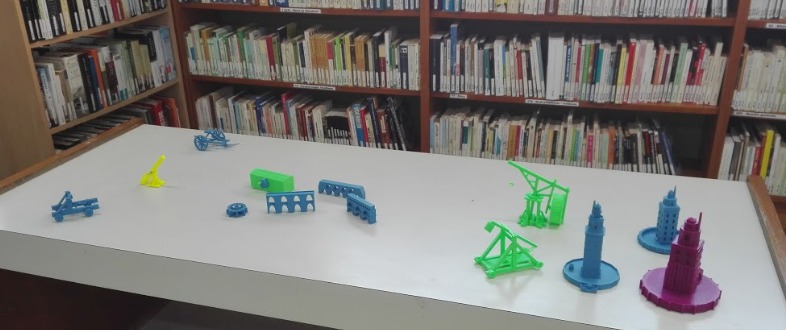
This task consisted of desgining a 3D Roman object that we printed with a 3D printer. We explored Roman technology and engineering to adapt ancient constructions tot our model.
Students worked in national teams of 3 or 4 participants and used programs like Thingiverse and Tinkercad to develope their creations. On the bottom of the page you will be able to watch and download them.
These is the list of technological constructions they had to investigate: sawmills, cranks, aqueducts, bridges and Roman arch, dams, ballistas, onagers and catapults, cranes, lighthouses, ploughs, reapers and harvesters, spiral stairs.
Teams distributed work like this:
- Czech Republich: Catapult, bridges with roman arch.
- Romania: Sawmill or crank, aqueduct.
- Greece: Harvester, dam.
- Catalonia: Crane, lighthouse.
Before starting with the 3D creation students draw a sketch of the chosen object. They worked with this worksheet that's divided into 4 parts:
- The top left for drawing the elevation plan.
- The top right for the profile.
- The bottom left for the ground plan.
- The bottom right for the projection.
Here you can see some of the sketches, the lighthouse and the aqueduct:
Next step consisted on describing the 2 real Roman objects using the analysis of an object questions. Question were useful for the oral presentation in Calaf:
- ANATOMICAL, MORPHOLOGICAL & ESTHETICS:
- What's it like?
- What shape does it have? And colors?
- Is it adapted for users manipulation?
- What texture does it have?
- Which are its dimensions?
- FUNCTIONAL:
- How does this object work?
- Which is the funcion of the most important parts?
- Which kind of energy is used for it to work?
- TECHNICAL:
- Name the different pieces of the object.
- Which materials are used for these pieces?
- How are the pieces joined?
- SOCIOLOGICAT & HISTORICAL:
- When was the object invented?
- Who was its inventor?
- Which needs are covered by it?
- Did other similar objects exist during the same ancient time?
- Which similar objects or uses exist nowadays?
Students searched one object with Thingiverse and for the more easy to design they used Tinkercad.
To know something about the instructions and how these 2 programs work you can search information at the activity 3D instructions.
Here you can see the complete works of all the students and you can download their STL file if you want to print them in 3D by clicking on the image: